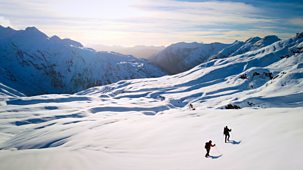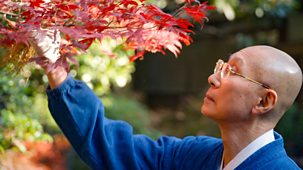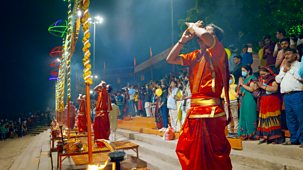
Series 1: Episode 3
In the concluding episode of the series, James explores how the art of the last hundred years reflects how we swapped nature for progress in the first half of the 20th century before rediscovering its beauty in the decades following the Second World War, and how today’s artists are re-imagining our future relationship with nature.\n\nThe film begins in the first decades of the 20th century, an era of human self-confidence, intent on conquering nature. In the art of Piet Mondrian, James explores how an artist who began life as a landscape painter gradually leaves nature behind, tidying up the messy reality of nature into abstract lines. We meet Chinese artist Yang Yongliang on the streets of New York, whose sprawling digital landscapes ask questions about our drive for rapid urbanisation.\n\nJames continues to explore this story through the images of one of the best photographers of the last century – and one of its most brilliant women - Margaret Bourke-White. In 1930, she was the first professional western photographer to be allowed into the Soviet Union, where she captured the rapid transformation of the country from being largely rural into a modern, industrial state. James moves on to explore how the destructive power of the atomic age both terrified and inspired artists in the 1940s and 1950s, from painters like Bittinger to the world of sci-fi films.\n\nWe then see the arrival of a new kind of art – land art. In the late 60s and 70s, a growing number of artists left the city and started working not only in nature but with it. We meet two contemporary land artists based in New Zealand: Philippa Jones and Martin Hill, who use natural materials to create sculptures in the landscapes of New Zealand’s South Island. And finally, we explore how artist collective Random International are using technology to explore our future relationship with nature – through a series of mesmerising art works.\n\nJames finishes the episode and the series asking questions of the interviewees who have appeared across the series. How do they see our future relationship with nature?\n\nHe concludes that on the long journey we humans have been on since our beginnings, artists have played a vital role not only in reflecting but also shaping our attitudes to nature. They’ve helped us understand its intricacy, appreciate its beauty, and now – when the entire planet seems under threat – they can help us forge a new relationship with it.
Source: BBC 4
Most recent episodes of Nature and Us: A History through Art
Nature And Us: A History Through Art
Series 1: Episode 3
In the concluding episode of the series, James explores how the art of the last hundred years reflects how we swapped nature for progress in the first half of the 20th century b ...
02-11-2024
BBC 4
Nature And Us: A History Through Art
Series 1: Episode 2
James Fox uses art to explore how humans began to try to understand nature for the very first time. From the Song dynasty in China and the Islamic world, through to the Scientif ...
26-10-2024
BBC 4
Nature And Us: A History Through Art
Series 1: Episode 1
In this first episode, art historian James Fox explores the art of the ancient world to reveal the story of our earliest relationships with nature. From the art of prehistoric h ...
19-10-2024
BBC 4
Most popular episodes of Nature and Us: A History through Art
Nature And Us: A History Through Art
Series 1: Episode 1
In this first episode, art historian James Fox explores the art of the ancient world to reveal the story of our earliest relationships with nature. From the art of prehistoric h ...
19-10-2024
BBC 4
Nature And Us: A History Through Art
Series 1: Episode 2
James Fox uses art to explore how humans began to try to understand nature for the very first time. From the Song dynasty in China and the Islamic world, through to the Scientif ...
26-10-2024
BBC 4
Nature And Us: A History Through Art
Series 1: Episode 3
In the concluding episode of the series, James explores how the art of the last hundred years reflects how we swapped nature for progress in the first half of the 20th century b ...
02-11-2024
BBC 4



